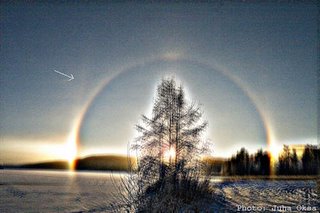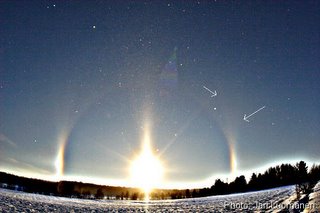
Bill Burton, USGS, observed nice halo display with very rare reflected Lowitz arcs. Bill: "This photo showing an impressively bright sub-Sun and sub-parhelion was taken from the window of a commercial airliner on a flight from Anchorage to Minneapolis. I was looking down at a thin, cirrus cloud layer over the snow covered farmland of southern Canada when these wonderful halos and arcs appeared. The Sun is above the image, producing this sub-Sun and upward-facing portion of a 22-degree halo. This sub-Sun was brilliant enough to create its own sub-parhelion and 22-degree arc - on the right side of the image. Photo taken on January 11, 2007"




